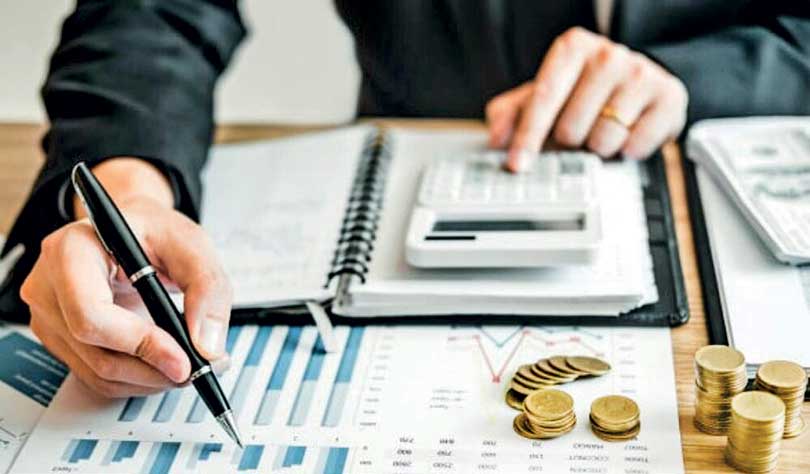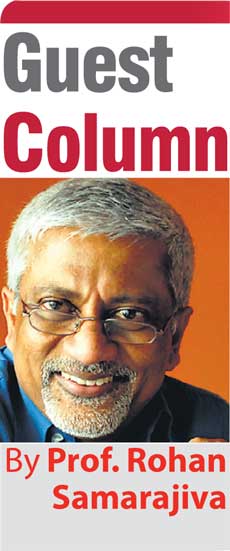Thursday Apr 24, 2025
Thursday Apr 24, 2025
Tuesday, 2 July 2024 00:02 - - {{hitsCtrl.values.hits}}

For debt restructuring to work, both sides must lose; both sides must gain
 As someone who has been trying for many years to get Sri Lankans to think more intelligently about the economy, these past days have been quite disappointing. The economic illiteracy of the masses can be understood. But what about the elites who are ranting about the
As someone who has been trying for many years to get Sri Lankans to think more intelligently about the economy, these past days have been quite disappointing. The economic illiteracy of the masses can be understood. But what about the elites who are ranting about the
wealth tax?
Misconceptions about debt
The latest complaint is that the bilateral debt was postponed, not forgiven partially. Over the past two years, it was explained many times that debt restructuring can take many forms: a haircut (or the reduction of the principal due); adjustment of the payment period; and changes to the interest charged. In all cases, the creditor takes a hit. In all cases, the debtor does not get off scot-free. For debt restructuring to work, both sides must lose; both sides must gain.
But such reasoning is foreign to us, it seems. We take stupid loans and keep re-electing the people who took them. But we seem to think the world owes it to us to forgive our indiscretions.
From the early days, it was known that China would not agree to a principal haircut on bilateral loans. Agreeing to a haircut of one country’s debt would lead to a cascade of demands because many of the countries China lent to are in trouble. When one creditor rejects haircuts, the others will follow. That is what happened with the bilateral loans.
Does the presence of China Development Bank in the class of commercial creditors mean no haircut there too? These things will not be decided on whether they think our president is a nice guy; it’ll be based on what the models say we can sustainably pay.
Lower taxes
Our Government is unable to service the debt that has piled up over the years. Commercial borrowing and borrowing from China started in 2007 because the Government of the time tired of the conditionalities that came with the loans from the conventional sources like the World Bank. Our traditional lenders had no interest in helping us fund Eelam War IV or in building towers topped by the pohottuwa symbol. The International Sovereign Bonds came with no strings, only high interest rates and bullet payments.
How does the Government service its external debt? The Government does not generate revenue in foreign currency, with a few exceptions such as budget support loans. It must buy dollars from the commercial banks, paying in rupees. For domestic debt, it needs rupees. Where does it get rupees from? Taxes, mostly (non-tax revenue is generally around 10% of the total).
What can Government do if it does not have enough rupees? It can take on more debt in dollars or rupees. The former was what was done for the ISBs that came due, until that avenue was closed off in early 2020 due to the downrating of Sri Lanka by entities such as Fitch. The reason was the Viyath Maga tax cut that was implemented by President Gotabaya Rajapaksa. The government revenues were seen as inadequate to service the debt.
Government can service its debt without taking on additional dollar debt. All it needs to do is buy dollars from local banks to repay the debt (assuming dollars have been brought in by exporters of which more below). But it must have rupees. If it has enough rupees, it can even reduce the debt burden. The only way to get rupees is to tax.
What kind of tax?
In the first nine months of 2023, the Government raised only 36% of its tax revenue from direct taxes (personal and corporate income taxes). Indirect taxes made up the rest (28% from import-based taxes and 36% from domestic consumption-based taxes). These taxes are paid by everyone, rich or poor, and easy to collect. But for many reasons, including increasing the accountability of government, it is considered good to increase the proportion of direct taxes, perhaps even to reverse the ratio from the current 36:64.
There are two ways to increase income-tax revenue: the tax rates can be increased or the number of persons subject to taxation can be increased. Since 2022, the Government is doing both. Having to pay taxes makes influential people unhappy. They will claim they are being treated unfairly and threaten to leave the country. When told that most countries impose higher tax burdens on residents, they ask what they get in return for their taxes in Sri Lanka. That is one of the desirable outcomes of direct taxation, wherein taxpayers become motivated to hold the Government accountable, rather than imagine that Government gets money from heaven to spend on the citizenry.
But it’s going to be difficult for several years because a significant proportion of tax revenues will go to servicing debt incurred by past profligate Governments to build convention centres that hold no conventions, stadia that host no games, etc. It is estimated that by the Government and by the IMF that 45% of the increased tax revenues expected to be raised by Government, amounting to 14% of GDP, will be required to service the debt, after restructuring.
In 2023, when professionals were screaming, the Government raised 9.2% of GDP in taxes. So, the intensity of protests when further increases are implemented can be imagined.
It has already started with the imputed rental income tax proposal.
The initial bids in the auction of non-existent resources known as Sri Lankan election were made last year when the opposition parties were getting ready for local-government elections. Both the JVP and the SJB vowed to lower the rate on the highest tier to 24%, from the current 36%. They also promised to raise the threshold of taxable income from the current Rs. 100,000 per month, thus reducing the number of people who would have to pay taxes. Can we go forward with a return to the auction of non-existent resources?
Taxes and the export economy
Everyone agrees that exports are essential. The disagreements are about the actions needed to remove what is holding back exports.
In the global production networks that now dominate the world economy, elements of products cross borders multiple times, the classic example being smartphones. One must ask why smartphone manufacturing is coming up in Chennai and not Colombo. One reason is high para tariffs. If inputs for export industries are taxed, the exports from Sri Lanka will be costlier than those from countries that do not have para tariffs.
The present Government is not the first to announce that para tariffs will be phased out. But this is difficult to do when import-based taxes make up 28% of the total tax take.
If the overall tax revenue has to be increased while a component making up around one quarter has to be phased out, there is no alternative but to increase the yield from income taxes (now 34%) and domestic consumption-based taxes such as VAT (now 36%).
Without phasing out para tariffs, we will continue to underperform on exports. That means we cannot avoid greater reliance on direct taxes and VAT. If that causes our professionals to leave these shores in large numbers, we will lack the human resources to support the export of goods and services. Either way, there is pain.
These are the conversations we must have and the consensus we must reach, not the engineering of partisan advantage at the next election.
Discover Kapruka, the leading online shopping platform in Sri Lanka, where you can conveniently send Gifts and Flowers to your loved ones for any event including Valentine ’s Day. Explore a wide range of popular Shopping Categories on Kapruka, including Toys, Groceries, Electronics, Birthday Cakes, Fruits, Chocolates, Flower Bouquets, Clothing, Watches, Lingerie, Gift Sets and Jewellery. Also if you’re interested in selling with Kapruka, Partner Central by Kapruka is the best solution to start with. Moreover, through Kapruka Global Shop, you can also enjoy the convenience of purchasing products from renowned platforms like Amazon and eBay and have them delivered to Sri Lanka.
Discover Kapruka, the leading online shopping platform in Sri Lanka, where you can conveniently send Gifts and Flowers to your loved ones for any event including Valentine ’s Day. Explore a wide range of popular Shopping Categories on Kapruka, including Toys, Groceries, Electronics, Birthday Cakes, Fruits, Chocolates, Flower Bouquets, Clothing, Watches, Lingerie, Gift Sets and Jewellery. Also if you’re interested in selling with Kapruka, Partner Central by Kapruka is the best solution to start with. Moreover, through Kapruka Global Shop, you can also enjoy the convenience of purchasing products from renowned platforms like Amazon and eBay and have them delivered to Sri Lanka.